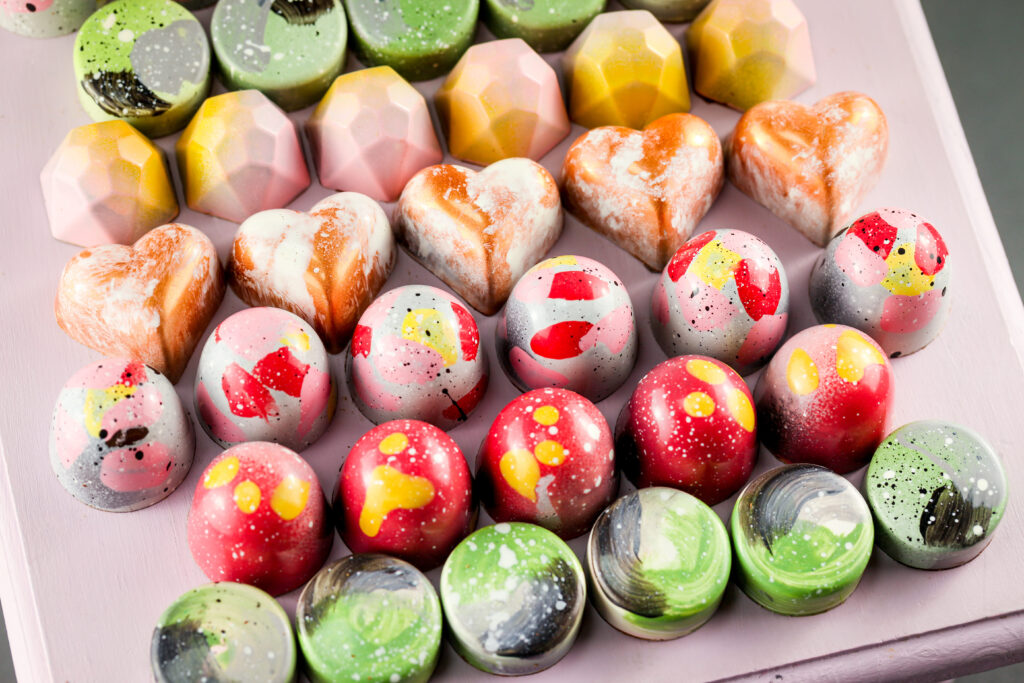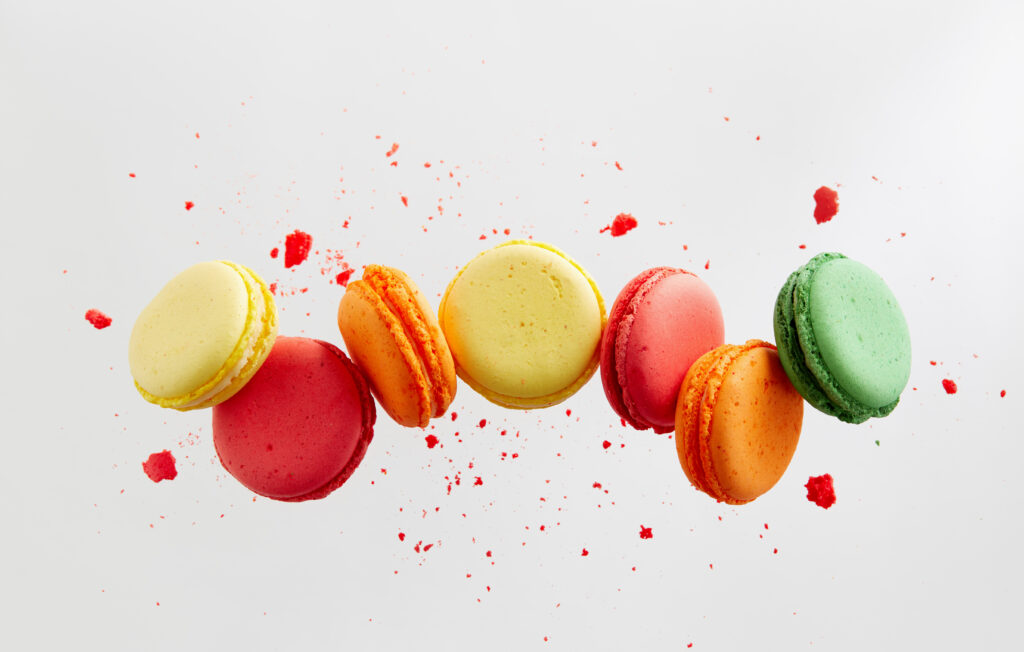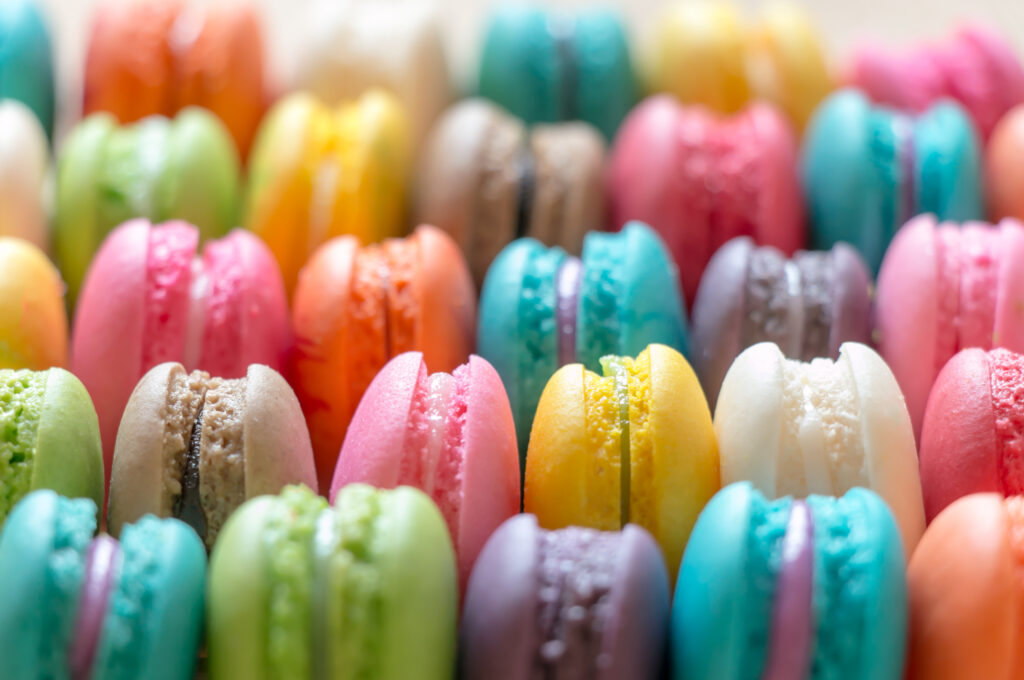A Guide to Working with Food Colours in the UK
Posted: 16 Oct 2023
In our long experience of supplying colouring products for chocolatiers and bakers, we find they tend to fall into two categories:
- Those who prefer to use natural colours
- Those who want their chocolate creations to be as bright and colourful as possible!
Food colourants themselves have a colourful history, with plenty of myths mixed in with the science. ‘E-numbers’ have become synonymous with negative side-effects, such as hyperactivity in children and long-term health implications. A trend towards more balanced, nutrition-led lifestyles has caused many to investigate more natural colourants. M&S was one major retailer that led the charge.
At exactly the same time, a growing appetite for Instagrammable food means that many of the treats we buy have been getting bolder, brighter, and more indulgent (think freakshakes and scrumptious, OTT cupcake toppings) …and chocolates and baked goods are no exception. A quick scroll through the chocolate wonders on Instagram will tell you that vibrant, super-shiny chocolates get the most engagement. In a world that takes something pretty special to stop the scroll, bright colours and innovative decoration shout the loudest.
As for which colourant route is right for your business, knowledge is power. Read on for the lowdown on what colourants are, what they aren’t, and which you can and can’t legally use in chocolate work*.

Everything you need to know about creating amazing colours in chocolate and patisserie.
First of all, what is food colouring?
Food colours, which are considered additives, can be any dye, pigment or other substance that can impart colour into food, but that cannot be consumed as a food product in their own right. E-numbers are a classification system, so all additives that are suitable for use in food have an E-number, issued by the European Safety Authority (EFSA). This means that even carrot or beetroot – when used as colourants – have e-numbers assigned to them.
What are synthetic food colours and are they bad?
Synthetic food colours are chemically synthesised. They tend to have superior colouring properties and are less sensitive to light. Whether they are considered ‘bad’ depends on whether you are happy to use non-naturally derived additives in your products. In any case, these colours are subject to EU regulations (more on this below).
The Mona Lisa colouring products from Keylink mention ‘AZO’ and ‘NON-AZO’. What does that mean?
AZO colours are synthetic food colours that contain a double nitrogen binding as part of their structure. In chemistry, this N=N group is called an AZO group. AZO groups do not occur naturally; they are always synthetic. AZO colours have a good technical performance in terms of migration, thermostability and sensitivity to light. They are brighter than NON-AZO colours. NON-AZO colours do not contain an N=N (AZO) group. They are more sensitive to heat and light than AZO colours and are not as bright. NON-AZO colours can be synthetic or “from natural origin”. The terms AZO and non-AZO are starting to disappear from colourant terminology now, because the two definitions can cause confusion. For now, they remain on some products on our site because long-term customers have grown used to their meanings.
What does “from natural origin” mean?
“From natural origin” food colours are made from an extraction of a vegetable, animal or mineral source. They are more sensitive to light and heat. They can also be ingredients which give both flavour and colour.
What about Southampton colours?
This is a group of six colours (five AZO and one NON-AZO) that have been determined in a study published by the University of Southampton to increase hyperactive behaviour in children. When using Southampton colours, European legislation requires you to mention the following on the label of your final product: “May have an adverse effect on activity and attention in children.” Many food manufacturers have now distanced themselves from these colours, so it’s now actually quite uncommon to find them in foodstuffs.
The Southampton colours are:
Sunset Yellow | E110 | Allura Red AC | E129 |
Quinoline Yellow | E104 | Tartrazine | E102 |
Carnoisine | E122 | Ponceau 4R | E124 |

Are all E-numbers bad?
No. E-numbers are simply a system for identifying all additives that have been specifically approved by the EU for use in food, and cover all of them, from those thought to induce hyperactive behaviour in children to nature-derived additives, such as carotene.
Right, that’s food colouring. What are colouring foods?
Colouring foods are ingredients that can be used to add colour. The essential characteristics of their source are maintained, and there is no selective extraction involved. All colouring foods have no E-number label. Tomato concentrate, coffee, cocoa, spinach and spirulina, for example, are all colouring foods. You can use them as they are, and they will impart colour into food products. Because they are not unnaturally processed, they have the benefits of being natural, but they do have limited technical performance.
How do I know how much of a food colouring I can safely and legally use?
Regulation EC 1333/2008 sets the rules on food additives: definitions, conditions of use, labelling and procedures. The legislation lists all E-numbers and indicates their conditions of use. The UK may no longer be in the EU, but until new specific legislation is issued, Regulation EC 1333/2008 still applies… with one or two caveats we’ll explain below.
Each Keylink product comes with a specification you can download and use to check the additives in the product. Once downloaded, if a spec changes you will be notified automatically so that you can update your labelling.
The database mentions “quantum satis” for lots of colourants?
In the Annexes to the above legislation, you will see the term ‘quantum satis’. As much as it may sound like the title of the next Bond movie, it simply means that no maximum level is specified. However, “colouring matters shall be used according to good manufacturing practice at a level not higher than is necessary to achieve the intended purpose and provided that they do not mislead the customer.”
In other words, use the minimum amount you require to achieve the look you are seeking, use no more than is needed, and be clear to the customer what is contained in the product through labelling the finished product.
I’ve heard that E171 Titanium Dioxide is now illegal?
Titanium Dioxide, also known as E171, was made illegal in France in January 2020. It’s a pigment commonly used to provide a cloudy effect and white base colour in everything from confectionery to toothpaste, medicines to cosmetics. Following ingestion, most titanium dioxide passes through the body unchanged. However, a maximum of 0.1% can be absorbed by the gut and distributed to various organs. These are called nanoparticles. By European law, for a compound to be considered a nanomaterial, nanoparticles should account for at least 50% of the particles in the number size distribution. While there are no specific limits on the particle size of titanium dioxide used as a food additive, food-grade titanium dioxide consists mainly of larger particles, and so food-grade titanium dioxide is not considered a nanomaterial.
As a precaution, France initially issued a temporary ban of one year. Anyone supplying food products to France during this time could not use titanium dioxide.
A study on a rat model by the National Institute of Agricultural Research published on January 20th 2017 suggests that the use of additive E171 in food is likely to be initiating and promoting effects of early stages of colon cancer, due to nanoparticles. For the final re-evaluation, it was concluded that the available data on titanium dioxide does not indicate health concerns for consumers. But they recommended new studies be carried out to fill data gaps on possible effects on the reproductive system, which would enable them to set an Acceptable Daily Intake (ADI).
The Ministry decided, as a measure of precaution, to ban E171 in all foods on the French market. One year after the trial ban, France made it a permanent ban, with the rest of the EU then following suit.
And now it’s banned across the EU?
Yes. Following a decision by the Standing Committee on Plant, Animal, Food and Feed of the European Commission on October 8th, 2021 and prior EFSA assessment, the ban has been translated into law by Regulation 2022/63 of January 14, 2022. Foodstuffs containing E171 cannot be supplied into EU member states.
Is titanium dioxide banned in the UK?
No, it isn’t. The current EU legislation around using colourants still applies to the UK at the time of writing. However, because the UK is no longer in the EU, the ban on use of E171 in food products does not extend to the UK, and the UK government found no reason to ban it.
Also, countries in which E171 is banned can still manufacture food products containing E171 for the UK market.
To cater to all needs, Keylink sells coloured products and colourants with, and without, E171, and we mark those clearly on our website, together with their accompanying specifications.
If you have any questions about the use of colourants in your business, we recommend contacting your local authority or trading standards office, as we’re aware some advice varies from region to region in the UK.

Right, so now I know what’s what, how do I know which food colouring products to use in which applications?
At Keylink we supply food colourants in various forms, from hugely popular coloured cocoa butters to shimmery powders! Take a look at our guide to learn when to use what!
Colouring type | Available in | Features | Use in |
AZO, NON-AZO and options with or without E171 |
|
You’ll find a full colour palette to choose from here | |
AZO, NON-AZO |
| Any fat-based recipe:
| |
AZO, NON-AZO, From Natural Origin |
| Any fat-based recipe;
| |
NON-AZO |
| Any fat-based recipe;
| |
E171 or E171-free, depending on the colour |
|
| |
Creative spray | NON-AZO |
|
|
NON-AZO |
|
| |
AZO, NON-AZO, options with and without E171 |
|
|
Helpful resources:
The Business Companion Guide to Colours in Food
Food labelling: giving food information to customers
*Disclaimer: The information in this article has been given in good faith; Keylink Ltd and our suppliers do not accept liability for any errors or omissions.
.svg)
 white.svg)